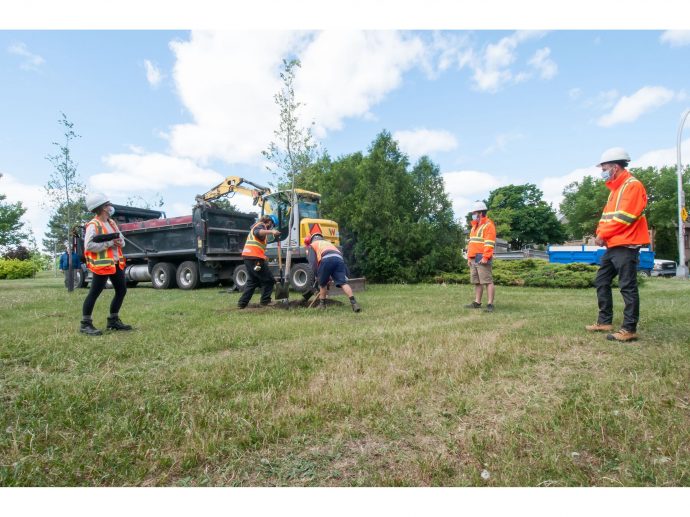Categories more
- Adventures (17)
- Arts / Collectables (15)
- Automotive (37)
- Aviation (11)
- Bath, Body, & Health (77)
- Children (6)
- Cigars / Spirits (32)
- Cuisine (16)
- Design/Architecture (22)
- Electronics (13)
- Entertainment (4)
- Event Planning (5)
- Fashion (46)
- Finance (9)
- Gifts / Misc (6)
- Home Decor (45)
- Jewelry (41)
- Pets (3)
- Philanthropy (1)
- Real Estate (16)
- Services (23)
- Sports / Golf (14)
- Vacation / Travel (60)
- Watches / Pens (15)
- Wines / Vines (24)
- Yachting / Boating (17)
Published
06/25/2021 by Ville de Montréal - Arrondissement de Saint-LaurentAs it continues its annual maintenance work on its forest canopy, Saint-Laurent's Administration is pleased to announce that it has planted more than 10,000 large trees on its territory since 2008. In 2009, the borough was the first in Montréal to adopt an Urban forestry plan, which aimed to protect its tree heritage and better manage its trees. This planning not only helps reduce heat islands and better adapt to climate change, but also promotes biodiversity. For example, Saint-Laurent has gone from 6 to 58 different tree species planted annually.
Through its plantings, Saint-Laurent's Administration achieves a net gain for Saint-Laurent's forest canopy every year. This result is all the more necessary, given the fact that approximately 70% of Saint-Laurent's territory is devoted to industrial and commercial activities, with only 3.3% covered by the canopy.
Quote
"We are proud to have surpassed this symbolic figure of 10,000 trees planted in just over 10 years in Saint-Laurent and, at the same time, we have greened several interchanges, including the Cavendish interchange, one of the largest on the island of Montréal. Trees occupy a very important place in the community and are at the heart of the borough's orientations, as they have a positive impact on residents' quality of life. The COVID-19 pandemic has moreover reminded us of all the advantages of green spaces in general and the urban forest in particular. In addition to beautifying neighbourhoods, trees improve air quality, help reduce heat islands and capture rainwater, thereby limiting flood damage. We are going to maintain this pace of planting trees over the next few years, in keeping with our vision of a sustainable municipal territory."
Alan DeSousa, Mayor of Saint-Laurent
Highlights
Since 2008, Saint-Laurent has planted 10,834 large trees on public property and plans to add 800 more in 2021. Over the past 12 years, the average is therefore over 900 trees planted per year, compared to 50-75 before 2008. As a symbol of this policy, the borough has greened the Cavendish interchange—one of the biggest on the island of Montréal—with large trees.
These results don't include the trees planted as part of park development projects or other projects related to the 10-year capital investment program. They also don't include tree planting on private land by private individuals, community organizations or businesses.
It is important to note that these are large trees. A tree is considered large when it has a minimum height of between 2.20 and 2.50 metres, a diameter of at least 55 mm and a root ball 70 cm wide, for a total weight of between 200 and 300 kg.
A new inventory of the trees in Saint-Laurent was taken last year, including the types of species and both the trees on public and private property. The purpose of this inventory is to identify available sites for new plantings.
It should be mentioned as a reminder that trees, first and foremost, provide the oxygen essential to life on Earth and they cool the climate through their shade. They are the primary support for all biodiversity and a major component of the quality of urban environments. They also contribute to an increase in property values and, when strategically planted, they can lead to savings on heating and air conditioning costs.
Saint-Laurent moreover contributes to Ville de Montréal's 2012-2020 Canopy action plan and Montréal's 2020-2030 Climate Plan, unveiled in December 2020, which includes the planting of 500,000 trees. On June 7, Ville de Montreal launched an awareness campaign for residents that will run throughout the summer on the benefits of trees in the city.















